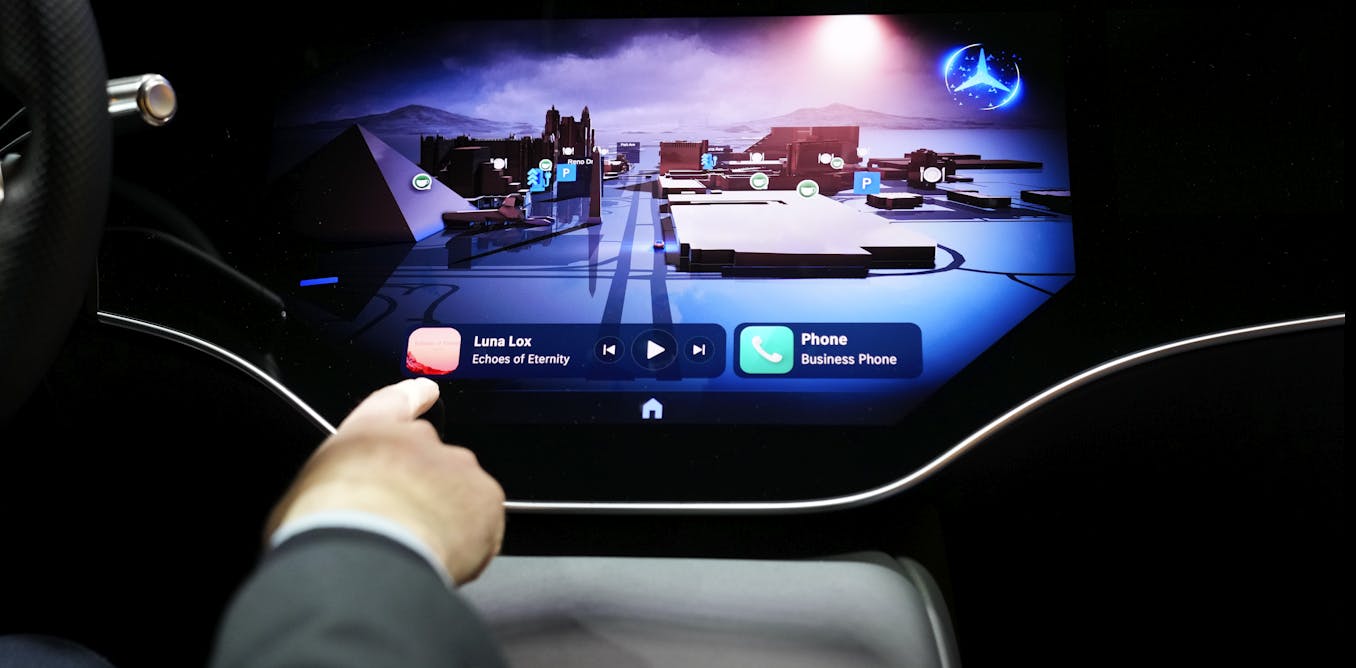Do you ever use your cellphone while driving? Don’t feel too guilty about saying yes – nearly 60% of drivers admit to using their phone in hands-free mode while driving.
But don’t become complacent either. Using your cellphone in hands-free mode while driving is not a perfectly safe activity, despite the impression you might be getting from laws, marketing messages and the behavior of people around you.
Fatal crashes caused by driver distraction have not gone down significantly over time: Distraction caused 14% of fatal crashes in 2017 and 13% of fatal crashes in 2021. Given that these numbers are calculated based on police-reported crashes, many experts believe the actual number of crashes caused by driver distraction is much higher. For example, real-world crash data from teens indicates that 58% of their crashes are due to driver distraction.
I am a human factors engineer who studies how drivers interact with technology. I see a gap between what people are told and what people should do when it comes to using your cellphone behind the wheel.
Hands-free calling
Most U.S. states ban hand-held cellphone use while driving but allow hands-free devices. However, hands-free devices are still distracting. Talking on a hands-free phone and driving is multitasking, and humans are not good at doing two cognitively demanding tasks at the same time.
For example, having a phone conversation in hands-free mode while driving causes you to stop looking out for hazards on the road and gets you into more close calls where you slam on the brakes than if you were not on the phone.
These detrimental effects last even after you end your call. There is a hangover effect: You can remain mentally distracted nearly 27 seconds after you finish using your cellphone. At 65 miles per hour, you’ve traveled nearly half a mile in 27 seconds.
Third-party apps
Third-party apps that connect your smartphone to your car’s interface, such ass Apple CarPlay and Android Auto, encourage you to use your phone in hands-free mode while driving. You can control things like music, navigation, text messaging and phone calls using voice commands and the car’s interface. IPhone users can connect their phones to more than 800 car models and Android phone users more than 500 models.
But is using these third-party apps while driving safe? Fifty-three percent of people say that if carmakers put the technology in vehicles, they must be safe. Though these third-party apps make cellphone use hands-free, they unintentionally cause you to look away from the road for dangerous amounts of time and they slow your reaction time.
Driving automation and distraction
Recent advances in technology have made driving a safer activity. Systems such as Cadillac Super Cruise and Tesla Autopilot control your steering and acceleration in limited situations, but they don’t mean you can text at will. Though it’s often lost in the marketing and enthusiasm for the systems, you are still required to pay attention to the road when you’re using them.
Research has shown that drivers using Level 2 automation, which combines adaptive cruise control with lane centering, are more likely to take their eyes off the road. Research also shows that watching a video or doing anything distracting while using these systems is unsafe – you stop looking at the road, and when you need to respond, it takes more time.
Some systems work to keep you focused on driving by monitoring your eye or head position to make sure you’re looking straight ahead. If your eyes are off the road for more than a few seconds, the systems alert you to bring your attention back to driving. This makes it difficult to get distracted by your phone.
Distracted driving awareness
April is Distracted Driving Awareness Month. Distracted driving – in hands-free mode, using a third-party app or when using driving automation – still claims thousands of lives each year in the U.S. Despite continual advances in vehicle technology, cellphone use while driving is likely to remain a challenging problem for the foreseeable future.
To discourage distracted driving, it’s important to look back to see what’s worked in the past to keep roads safe. Modifying the culture around distracted driving as well as comprehensive education, training and media campaigns, similar to “Click It or Ticket” to encourage seat belt use, are good examples of what works. To that end, on April 1, 2024, the National Highway Traffic Safety Administration launched the “Put the Phone Away or Pay” campaign to discourage distracted driving.
And for all of those who drive with children in the car, be sure to model safe behavior – they are watching and learning from you.




